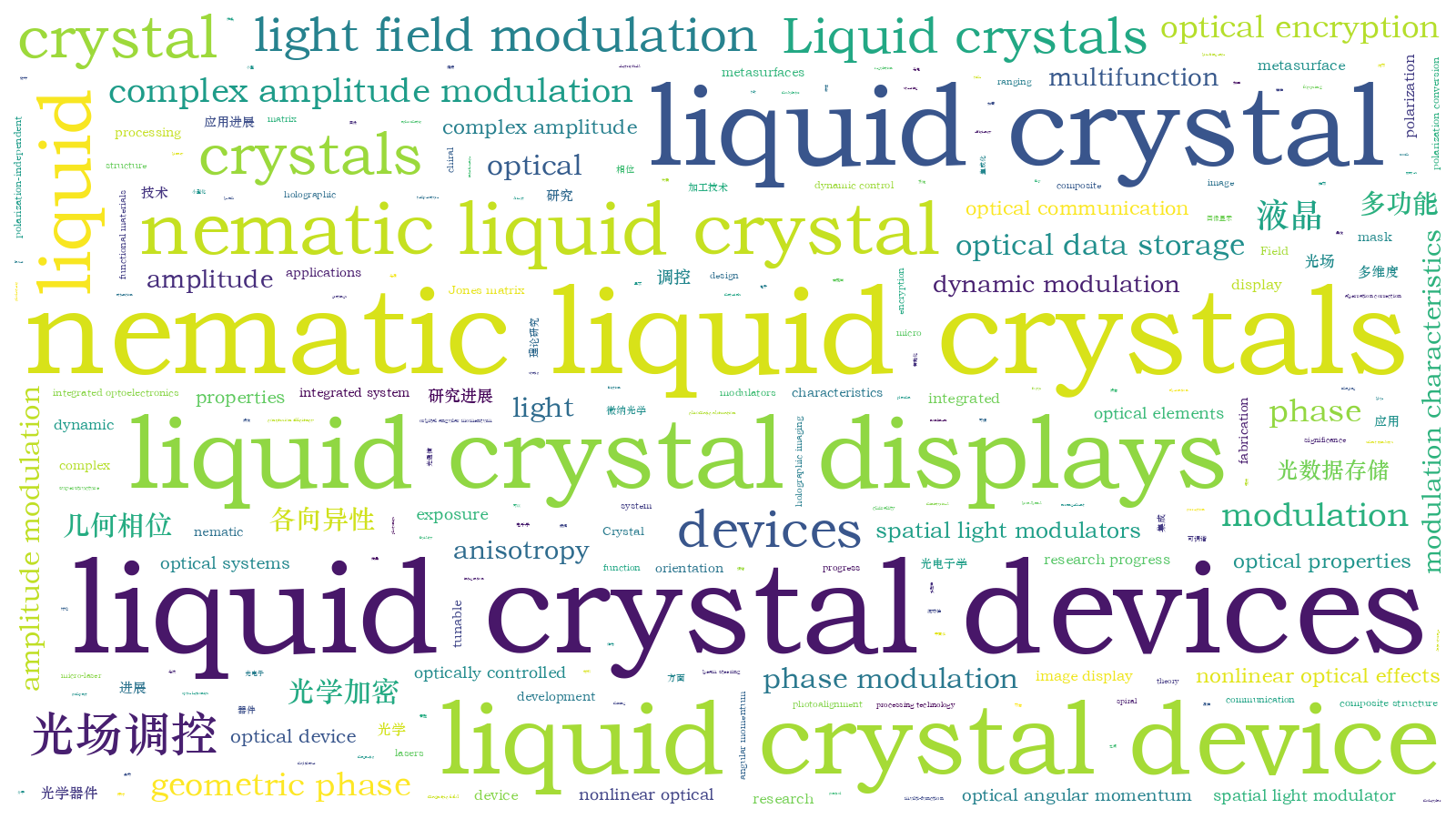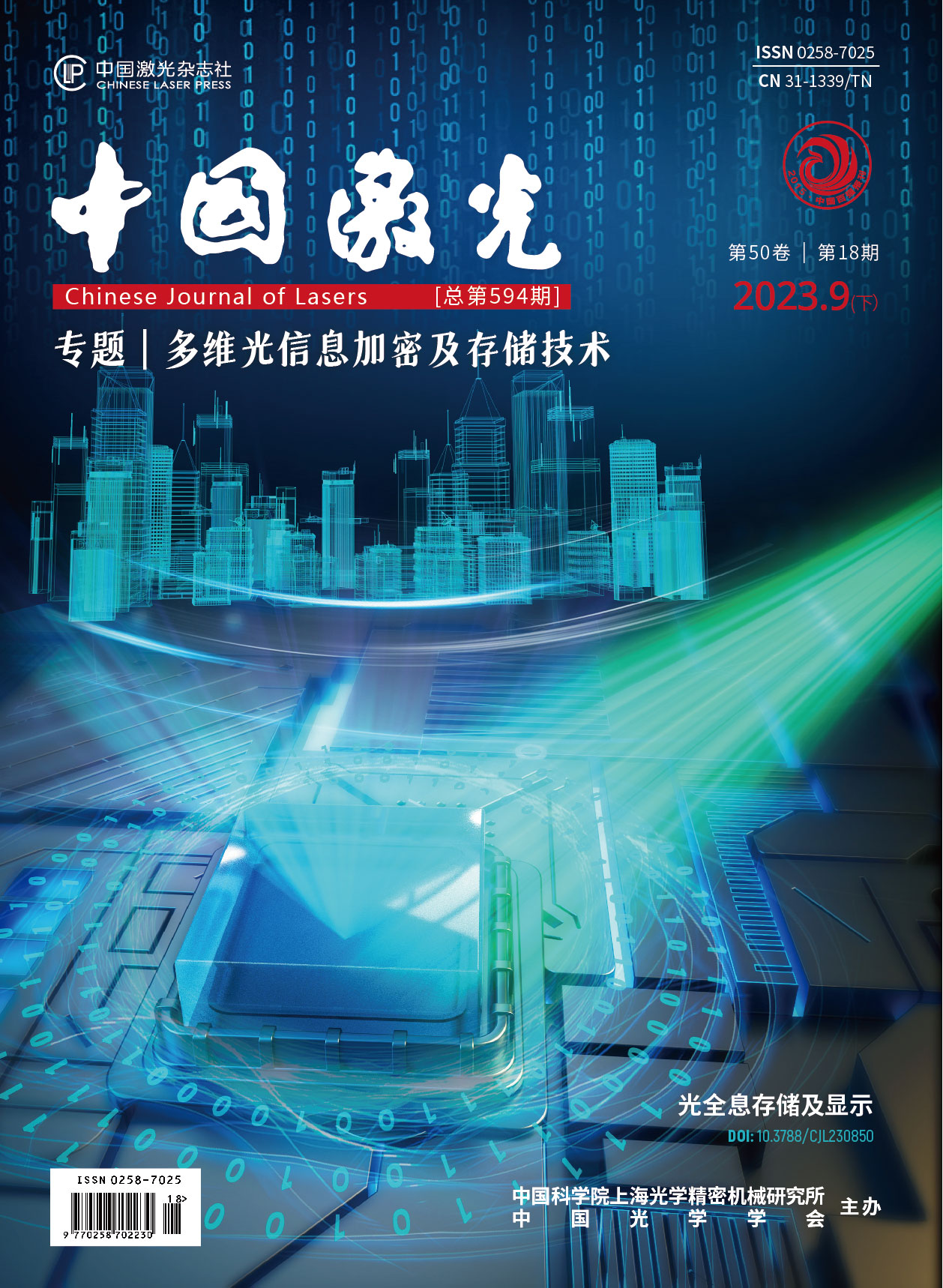液晶的多维度光场调控技术研究进展  下载: 902次特邀综述
下载: 902次特邀综述
As a class of soft functional materials that exhibit both liquid and solid-like properties, liquid crystals can simultaneously show fluidity and crystal anisotropy, and have been widely applied in the fields of image display, integrated optoelectronics, optical communication, and others. In the past decades, with the development of the liquid crystal theory and processing technology, the research on liquid crystals has gradually matured from the conventional display to advanced liquid crystal photonics, which is of great significance for the realization of integrated, intelligent, and miniaturized optical systems. Liquid crystals can exhibit abundant phase states, including smectic, nematic, cholesteric, and blue phases. Each phase state has its unique properties and can be applied in different fields, including tunable optical devices and polarization converters. Therefore, the light modulation characteristics of liquid crystals, including their amplitude, phase, and polarization, are investigated. Based on these properties, a variety of liquid crystal devices can be designed to replace the conventional refraction optical elements, such as gratings, focusing lenses, spiral phase plates, beam steering devices, and holographic imaging devices. For the successful fabrication of devices, liquid crystal molecules should be controlled precisely in terms of the friction orientation, tilt evaporation orientation, and photoalignment. Each technology has its unique advantages from the perspective of different applications. In addition, liquid crystals can be dynamically controlled by varying the electric field, magnetic field, or temperature. The use of liquid crystals in the field of lasers and metasurfaces is of great significance to prepare tunable liquid crystal micro-laser and liquid crystal metasurface composite devices. Therefore, it is extremely important and necessary to summarize the liquid crystal modulation techniques to guide the future development of this field.
This paper summarizes the research progress in multi-dimensional light modulation enabled by liquid crystals. The light modulation characteristics of liquid crystals are derived from their birefringence properties through the Jones matrix (Fig. 2). A variety of photoalignment technologies, including mask exposure, interference exposure, direct write exposure, plasma mask exposure, and dynamic mask exposure, are presented (Fig. 3). According to the light modulation characteristics of liquid crystals, liquid crystal devices are classified into amplitude, phase, and complex amplitude types. Amplitude-type liquid crystal devices include liquid crystal displays, amplitude-type spatial light modulators, and liquid crystal smart windows (Figs. 5-7). Phase-type liquid crystal devices include phase-type spatial light modulators and geometric phase-type liquid crystal devices. The researchers developed an orbital angular momentum holographic encryption system based on a phase-type spatial light modulator. For geometric-phase liquid crystal devices, some geometric-phase nematic liquid crystal devices are first introduced. In order to overcome the low polarization conversion efficiency of nematic liquid crystals, the researchers from Nanjing University obtained a chiral flip controllable self-assembled spiral superstructure by mixing a photosensitive molecular machine with a chiral agent with opposite chirality. An optically controlled transformable optical device with a continuously adjustable working band and geometrically conjugate phase was realized (Fig. 10). By introducing the extension of Marius' law to the orientation arrangement of liquid crystal molecules, the researchers from Wuhan University realized the independent regulation of the amplitude and phase of light waves, realizing a breakthrough in ultra-compact multifunctional liquid crystal devices (Fig. 12). Based on the Jones matrix, the researchers from Hunan University found that binary phase modulation also contributes to continuous amplitude modulation and realized a complex amplitude liquid crystal device (Figs. 13 and 14). The concept of metasurface has attracted considerable attention in recent years. However, once the structure of the metasurface is determined, it is difficult to realize dynamic modulation. To overcome this situation, researchers have combined metasurfaces with liquid crystals to achieve dynamic control of the optical properties of the integrated system (Figs. 15 and 16). Benefiting from the liquid, self-assembling, and tunable properties of liquid crystals, researchers have developed liquid crystal-based micro-lasers (Fig. 17). In addition, other light modulation applications enabled by liquid crystals, including nonlinear optical effects and optical angular momentum modulation, have been discovered (Figs. 18 and 19).
With the development of the liquid crystal research theory and fabrication/processing technologies, different light-modulation technologies based on liquid crystals have been developed for various optical applications ranging from conventional display amplitude modulation to geometric phase modulation, and complex amplitude modulation, static to dynamic modulation, and single-function to multi-function integration. This paper outlines the recent research progress of multi-dimensional light modulation based on liquid crystals, especially the design and processing of multifunctional liquid crystal devices. At the same time, combining a dynamically controllable liquid crystal with a metasurface to form a composite structure can integrate more functions in a single device. The field of liquid crystals also faces certain issues in aspects ranging from structural design to device fabrication, such as how to achieve multifunctional multilayer integrated liquid crystal devices, broadband achromatic liquid crystal devices, polarization-independent liquid crystal devices, vertical chromatic aberration correction of liquid crystal devices, and zoom liquid crystal lenses. Therefore, it is necessary to focus on the above areas, and we believe that optical devices based on liquid crystals will play an increasingly important role in optical encryption, image display, optical communication, and data storage.
朱宸, 邵正龙, 周英杰, 任佳琪, 樊帆, 汤东亮. 液晶的多维度光场调控技术研究进展[J]. 中国激光, 2023, 50(18): 1813006. Chen Zhu, Zhenglong Shao, Yingjie Zhou, Jiaqi Ren, Fan Fan, Dongliang Tang. Advances in Multi-Dimensional Light Field Modulation Based on Liquid Crystal[J]. Chinese Journal of Lasers, 2023, 50(18): 1813006.







